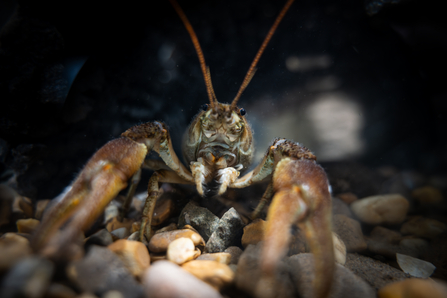The white-clawed crayfish is one of our largest native freshwater invertebrates and needs particular minerals to grow and fortify its hard, outer protective layer (its exoskeleton that covers its body), the same way we need calcium to enrich our bones.
This omnivorous crustacean prefers to spend the day hidden underneath stones and rocks, and in small crevices, from which it emerges to forage for food including invertebrates, carrion, water plants and dead organic matter.
White-clawed crayfish were once widespread and common throughout England and Wales, but since the 1970s they have suffered a dramatic decline. This alarming loss in the UK is primarily due to competition and predation from a larger invasive non-native crayfish species from North America, the signal crayfish Pacifastacus leniusculus, which carries a deadly crayfish plague which can quickly wipe out our native species.

